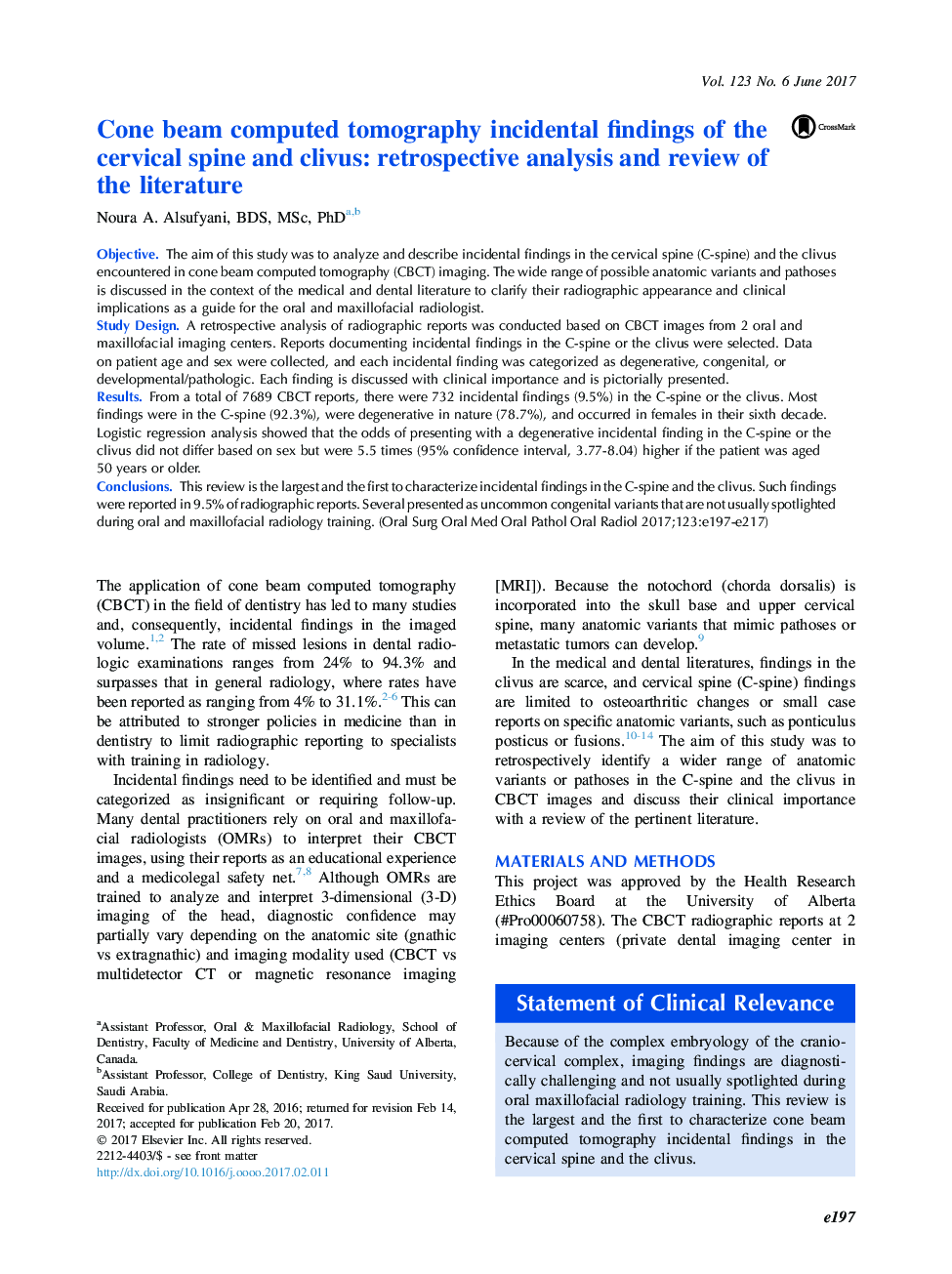| Article ID | Journal | Published Year | Pages | File Type |
|---|---|---|---|---|
| 5642783 | Oral Surgery, Oral Medicine, Oral Pathology and Oral Radiology | 2017 | 21 Pages |
ObjectiveThe aim of this study was to analyze and describe incidental findings in the cervical spine (C-spine) and the clivus encountered in cone beam computed tomography (CBCT) imaging. The wide range of possible anatomic variants and pathoses is discussed in the context of the medical and dental literature to clarify their radiographic appearance and clinical implications as a guide for the oral and maxillofacial radiologist.Study DesignA retrospective analysis of radiographic reports was conducted based on CBCT images from 2 oral and maxillofacial imaging centers. Reports documenting incidental findings in the C-spine or the clivus were selected. Data on patient age and sex were collected, and each incidental finding was categorized as degenerative, congenital, or developmental/pathologic. Each finding is discussed with clinical importance and is pictorially presented.ResultsFrom a total of 7689 CBCT reports, there were 732 incidental findings (9.5%) in the C-spine or the clivus. Most findings were in the C-spine (92.3%), were degenerative in nature (78.7%), and occurred in females in their sixth decade. Logistic regression analysis showed that the odds of presenting with a degenerative incidental finding in the C-spine or the clivus did not differ based on sex but were 5.5 times (95% confidence interval, 3.77-8.04) higher if the patient was aged 50 years or older.ConclusionsThis review is the largest and the first to characterize incidental findings in the C-spine and the clivus. Such findings were reported in 9.5% of radiographic reports. Several presented as uncommon congenital variants that are not usually spotlighted during oral and maxillofacial radiology training.
